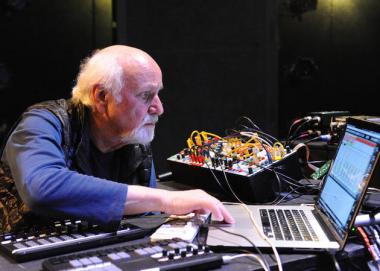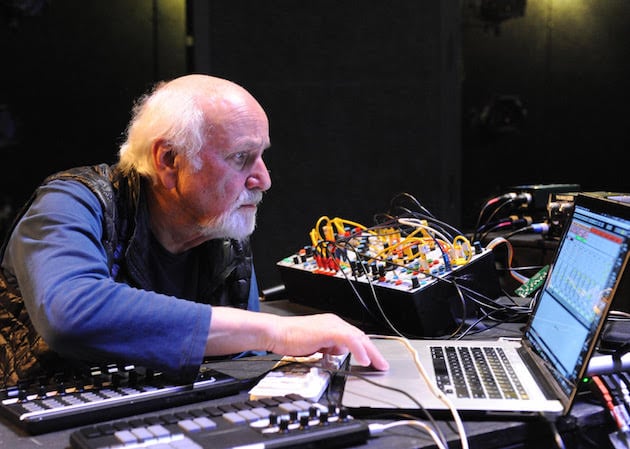
It’s hard to believe when you hear it — especially if it’s your first time — but Morton Subotnick’s spectacular electronic tone poem Silver Apples of the Moon, is 50 years old. It was the first electronic piece specifically commissioned for the phonograph, and it became a surprise best-seller on Nonesuch LPs and reel-to-reel tapes in 1967. Those were the only ways you could experience it then.
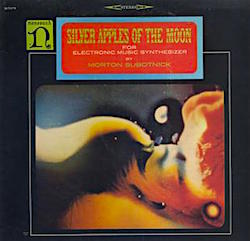
Yet technology marched on, and Subotnick — who turns 85 in April — has lived long enough to see it develop to the point where he can take Silver Apples, and then some, on the road. Thus, at REDCAT Tuesday night, Subotnick performed his latest elaboration on his “greatest hit,” coupling it with a newer piece that he has been working on for several years, Crowds and Power.
Subotnick had previously brought Silver Apples to REDCAT in 2012, running it together with A Sky of Cloudless Sulphur with instrumental interaction from the California E.A.R. Unit. But this time, the sounds were completely generated by Subotnick from a more-compact-than-ever Buchla synthesizer module, Ableton Live software, touchplates, and Mac laptop — all of which can fit in a suitcase. Complementing that was a stream of abstract video images from the animation/video/media artist Lillevan, operating from his laptop on the other side of the room.
On this occasion, the structure of Silver Apples was more faithful to the original, on top of which Subotnick added additional textures on the fly. The sound quality of the original samples hasn’t aged at all as heard through the excellent REDCAT sound system. Combined with Lillevan’s images, the whirling 6/8-meter electronic groove in Part Two that joyously blew a lot of minds in the 1960s now seemed like a roaring, delirious portrait of a civilization spinning out of control. The notorious march in the first movement of Shostakovich’s Seventh Symphony does a similar thing in a very different context, the rhythm building and building in a relentless crescendo.
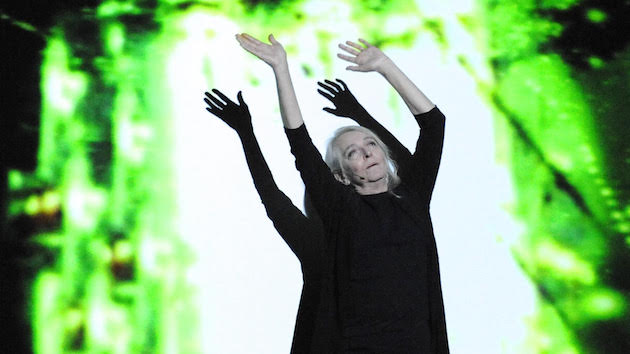
Subotnick executed an early fade on Silver Apples at around the 25-minute mark and then there was a long silence as a galaxy of stars filled the screen and singer Joan La Barbara silently appeared before it. Silver Apples thus served as a long prologue to Crowds and Power, a piece that shares the ABA structure so characteristic of his pieces from the late-1970s and ’80s. The concept comes from a 1960 Elias Canetti book of the same name about the use of power to inflame crowds and how power can be used to give its victims false hope while readying them for the kill. Subotnick was careful to point out in his notes that the piece was evolving “long before the recent election,” but that power of suggestion gave it some ominous implications.
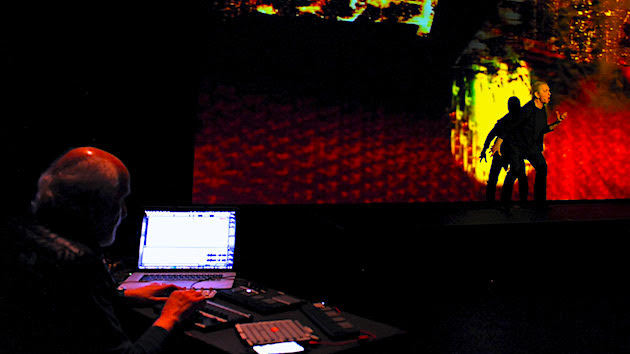
The first part was quiet, spare, and lightly cloudy in texture; the second part introduced orange-yellow-colored video images reminiscent of the porous-rock cliffs of New Mexico as La Barbara wordlessly uttered a vocabulary of extended vocal techniques, making gestures with her body that suggested fear. Then the loudspeakers exploded in a blast of Subotnick aggression familiar from his “ghost score” pieces — this composer always has had distinctive electronic signatures — before fading into stillness against abstract galactic visions on the screen. I thought I caught some popping ostinatos from Cloudless Sulphur in the mix toward the end as well.
REDCAT was sold out for the performance, as was the second performance the following night. Yes, there was a time, toward the end of the 20th century, when Subotnick and other electronic pioneers were nearly forgotten as succeeding trends in new music elbowed them aside. But younger generations have rediscovered him, realizing that pieces like Silver Apples and Touch were the direct progenitors of today’s electronica genre. The Wergo and Mode labels have gradually reissued Subotnick’s once-out-of-print electronic canvases and “ghost score” pieces, with Mode releasing some of them at last in the stunning, surround-sound format originally envisioned by the composer. There is no better time to savor the sounds of this still-vital electronic music patriarch than now.

